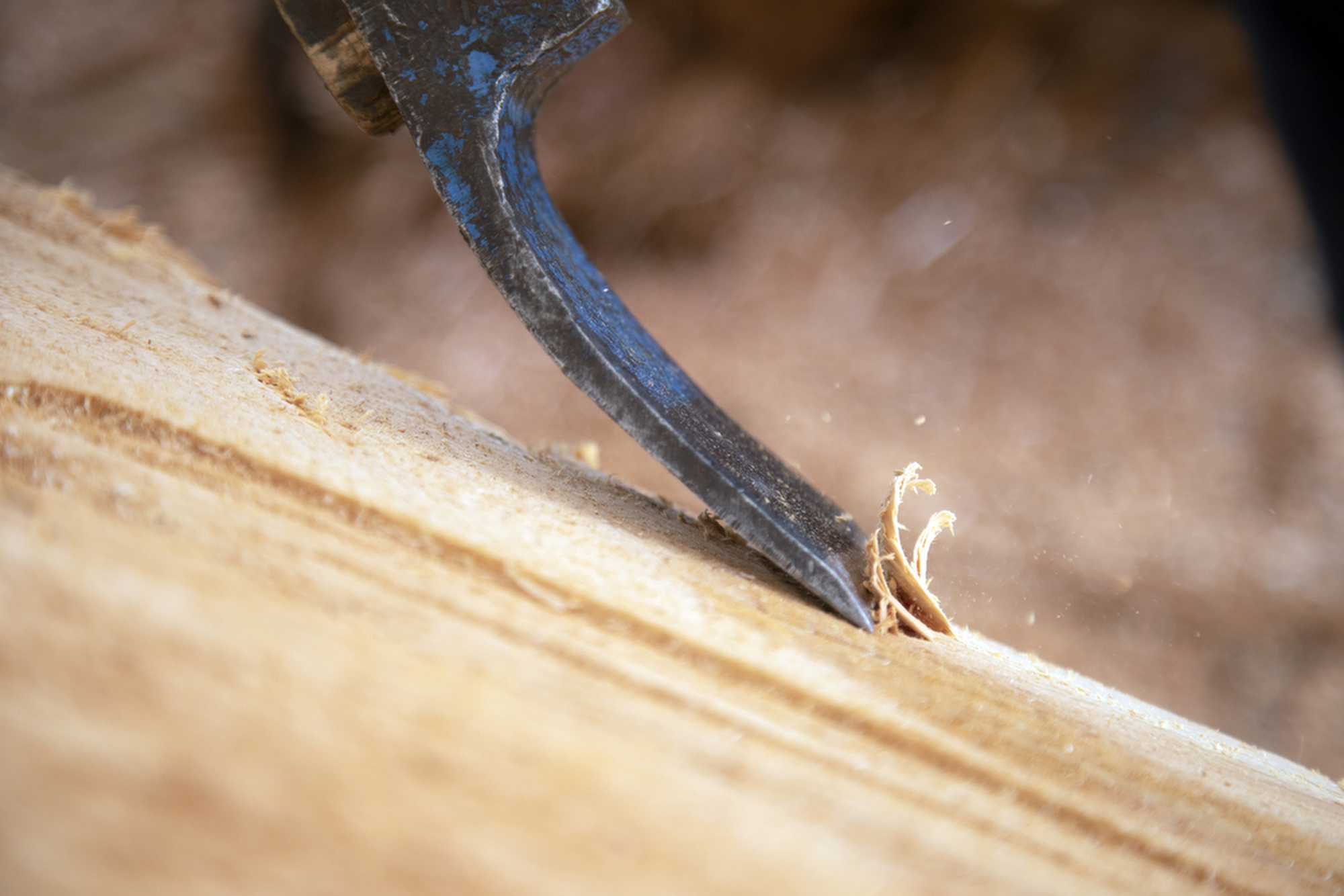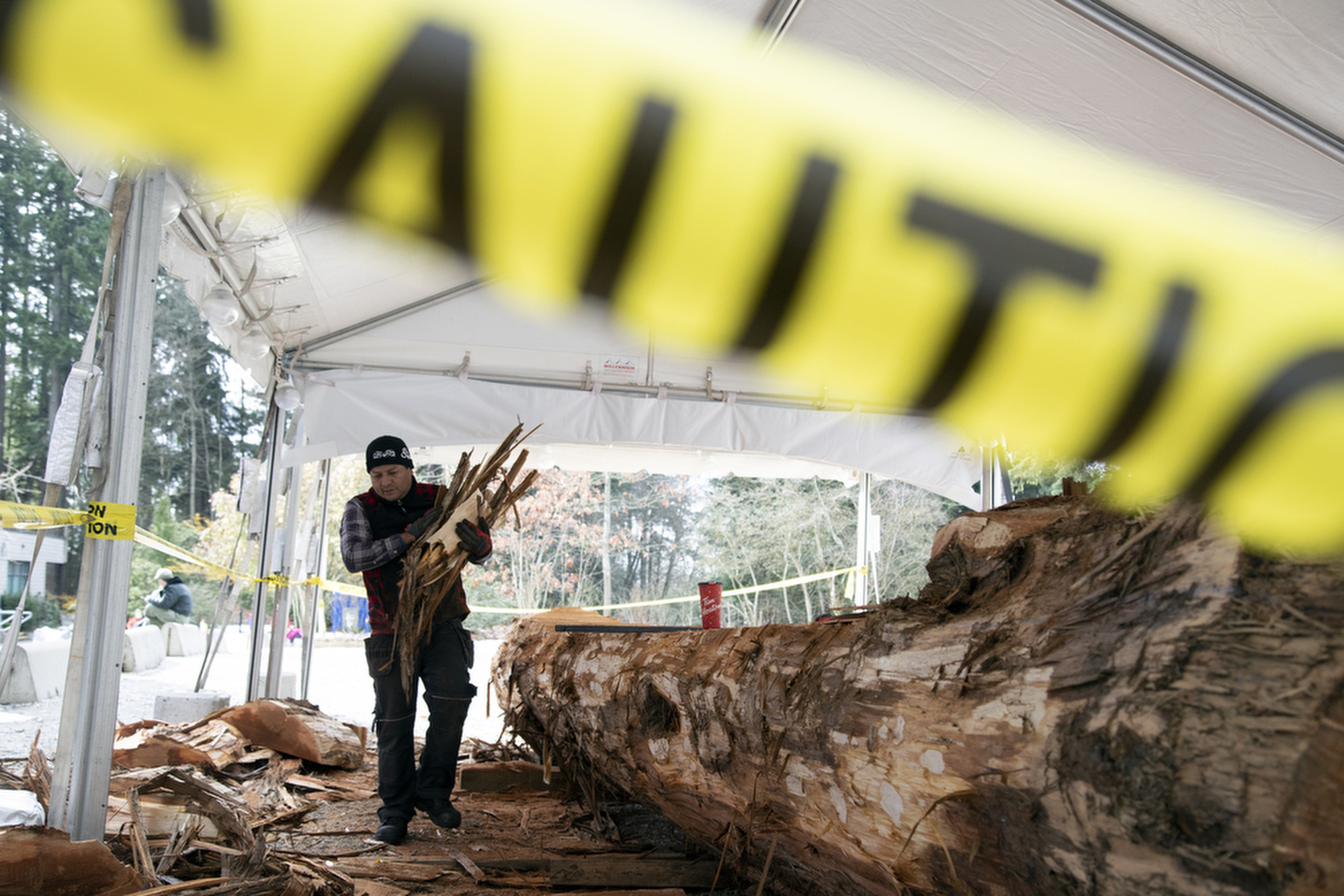Stories
The making of CapU’s legacy canoe
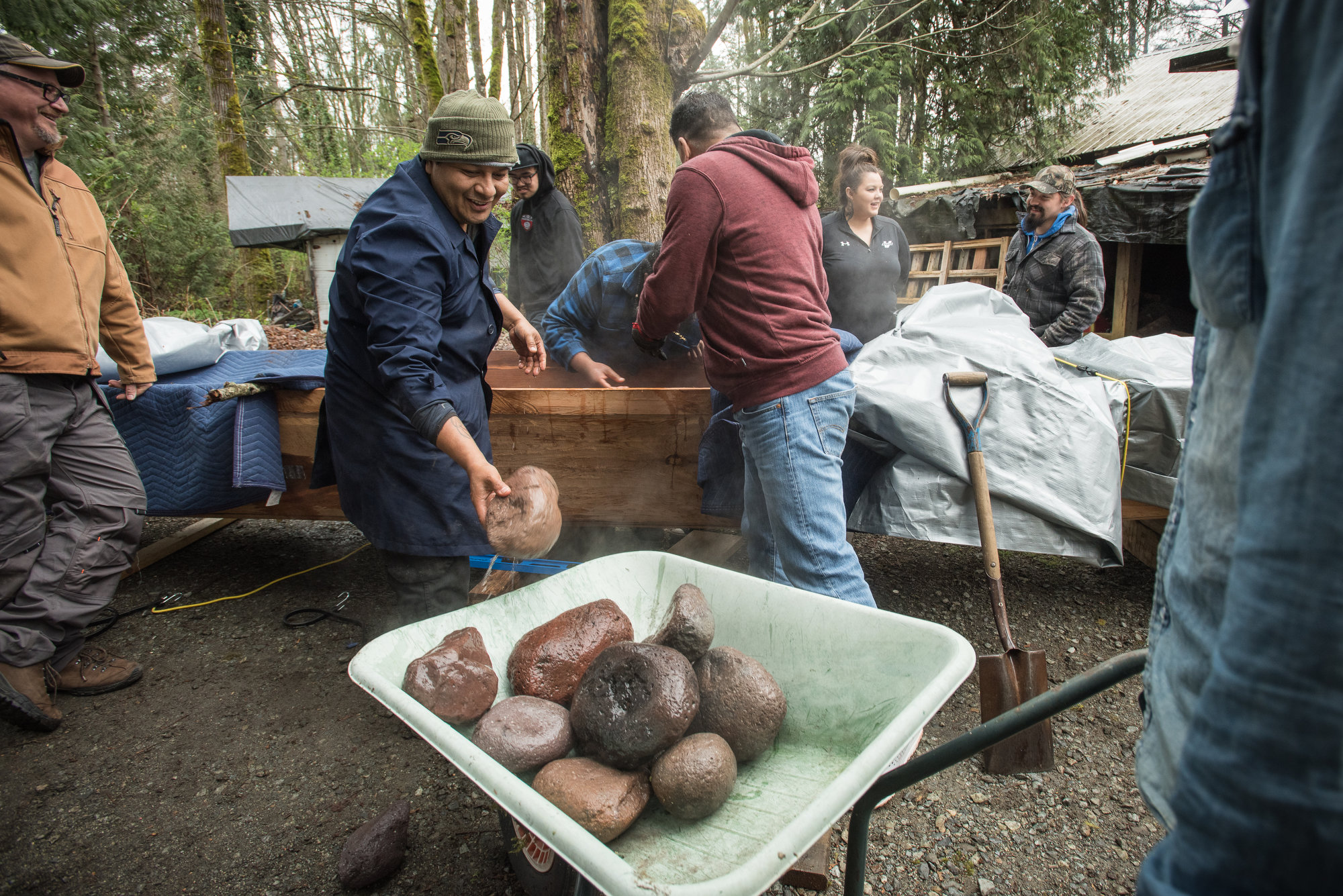
Master Carver Ses siyam (Ray Natraoro), second from left, moves rocks to a wheelbarrow during the canoe steaming process.
The 30-foot-long seaworthy hunting canoe, named “Skw’cháys” in the Squamish language, was carved from an 800-year-old red cedar from the Elaho Valley northwest of Whistler, BC. It’s painted in the traditional red and black of the Squamish Nation. The hull floor is decorated with resin and river rock in an arrow design to clear the path for a safe journey. It’s a work of art that brings the ancient Coast Salish tradition of canoe carving to life, but it’s also a functioning vessel.
“It’s like being in a Cadillac, but with the speed of a Ferrari,” says artist Ses siyam (Ray Natraoro). “When you’re riding in my canoes, people only see the back of your head.”
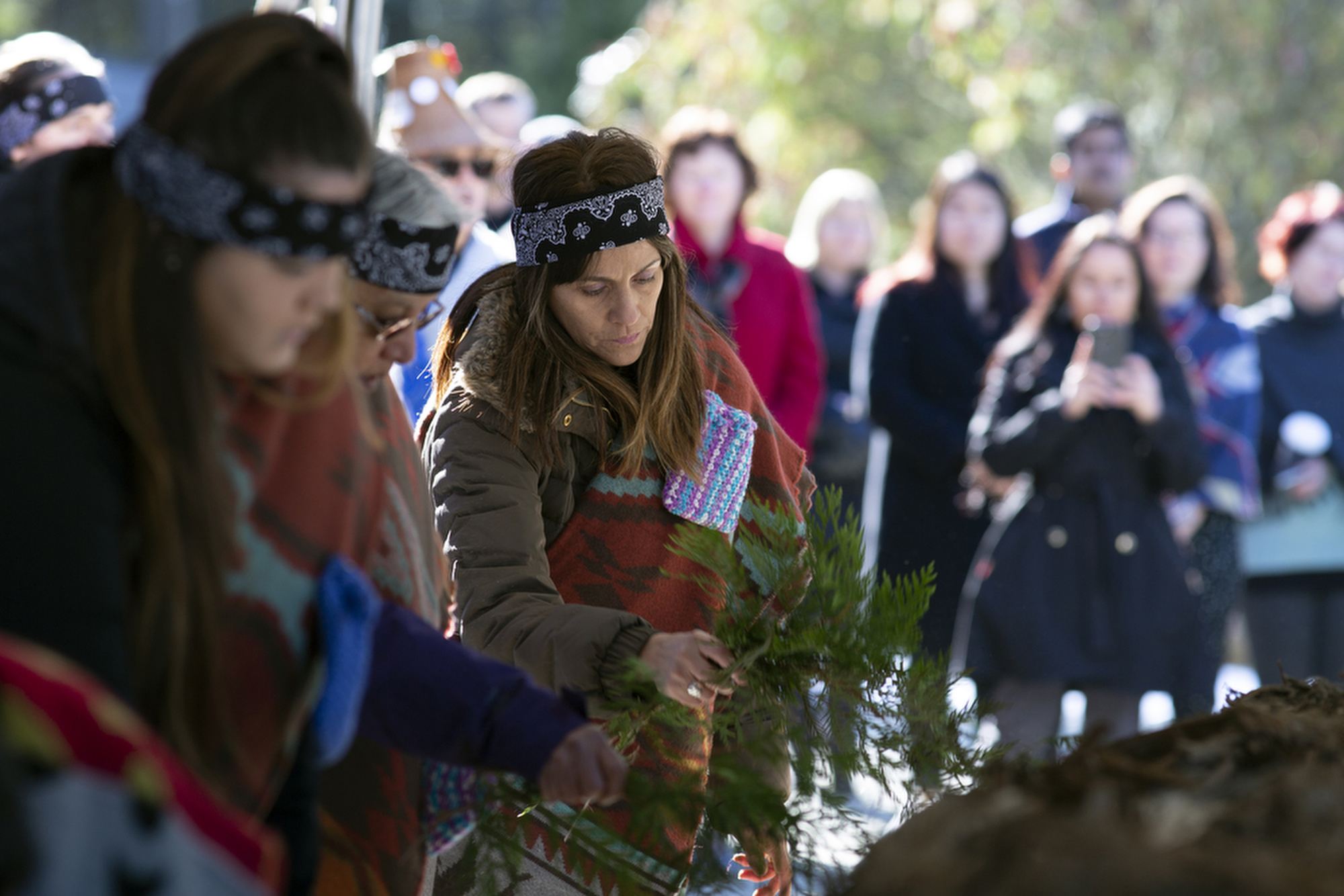
Noelle Natraoro brushes the log with cedar at the log blessing ceremony.
Commissioned by Capilano University as a 50th anniversary legacy, the canoe symbolizes the University’s commitment to Truth and Reconciliation and recognizes the importance of passing on Indigenous knowledge and traditions to the next generation.
This is the 34th canoe that the seventh-generation master carver from the Squamish Nation has created.
“I used to watch my grandfather, great-grandfather and great-uncle carve,” recalls Ses siyam. “To see them create something out of a piece of wood was amazing to me.”
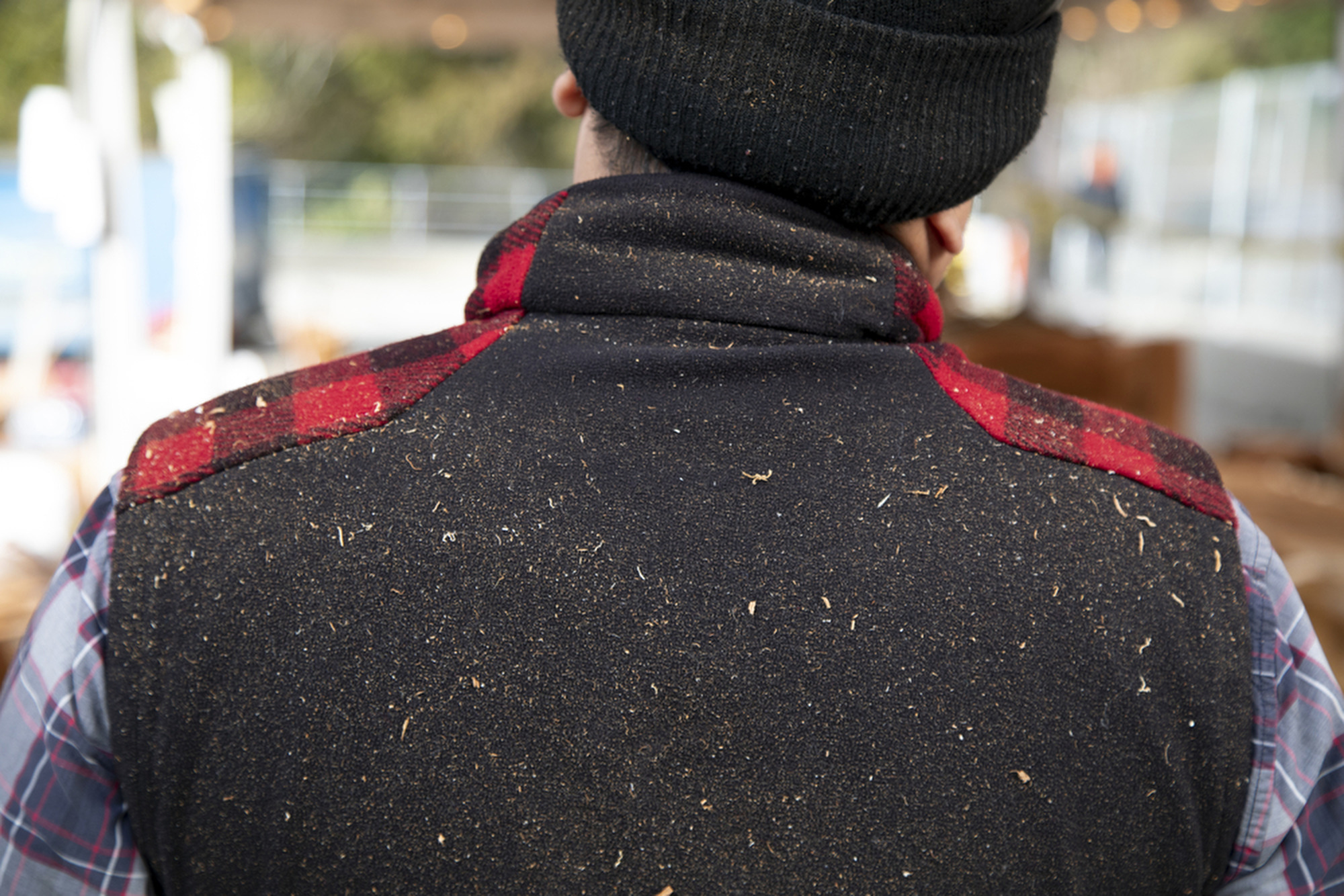
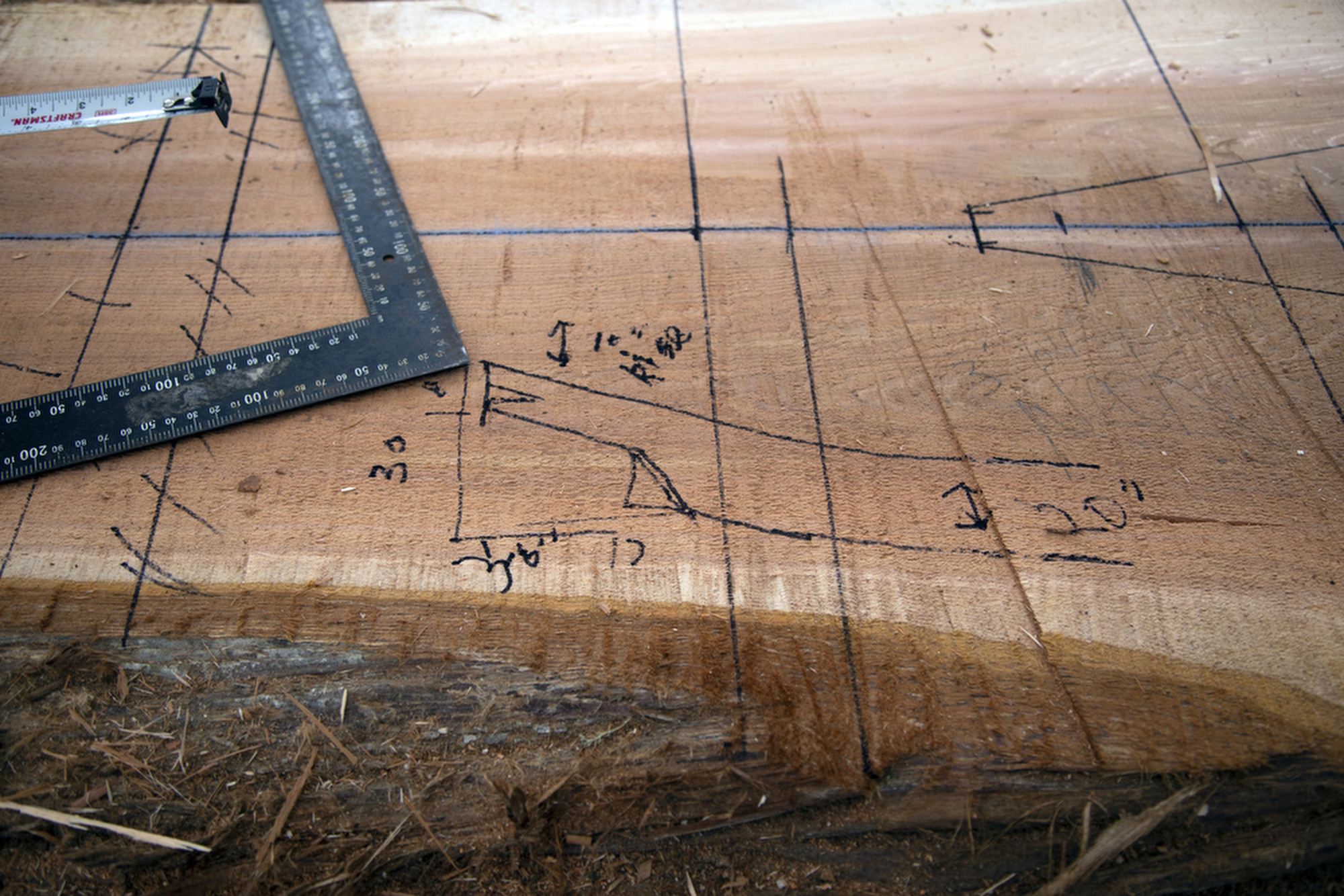
Left: Wood shavings on Ses siyam’s back are seen during a break between carving. Right: Ses siyam’s sketch of measurements for the canoe are seen on the log.
The process of canoe-making starts with finding the right tree. Ses siyam goes into the forest to pray, and is drawn to a particular tree: “We don’t select the tree. The tree chooses us because it was meant to be a canoe. The wood is the master, I’m only the tool.”
When the tree falls, its life is taken so a blessing ceremony is held, says Ses siyam. “We introduce ourselves to the tree and talk about what we’re going to do. Women brush the canoe with cedar boughs, while the men sing and drum. We make a spiritual connection with the tree.”
Xats’alánexw siyám (Victor Harry), hereditary Chief of the Xats’alánexw family, carved the legacy canoe alongside Ses siyam. They started by cutting and shaping the canoe using a chain saw, then they dug out and textured the inner walls using adzes and drawknives.
Next, 100 lava rocks, called “grandfathers,” were gathered from the Squamish Valley for the steaming process. “When we select the rocks, we pray and do a ceremony because we are removing the rocks from their home,” says Ses siyam. “Then we do two days of prep before the steaming and put 8” of water in the canoe to soften the inner walls.”
“We get two fire pits ready and heat up the rocks so they’re red hot, then put the rocks in the canoe to start heating up the water. An hour later, we put more hot rocks in and the water starts to boil and steam. The hot water warms up the inside of the canoe, which helps soften and widen the canoe.”
The steaming process for the legacy canoe took just under 10 hours, and stretched the canoe from an original width of 32 inches to 46 inches. Afterwards, the seats were placed in the canoe to keep its shape and areas that opened up during the steaming process were glued and patched. The outside of the canoe was then textured and painted black on the outside, the inside red, then sealed with marine epoxy.
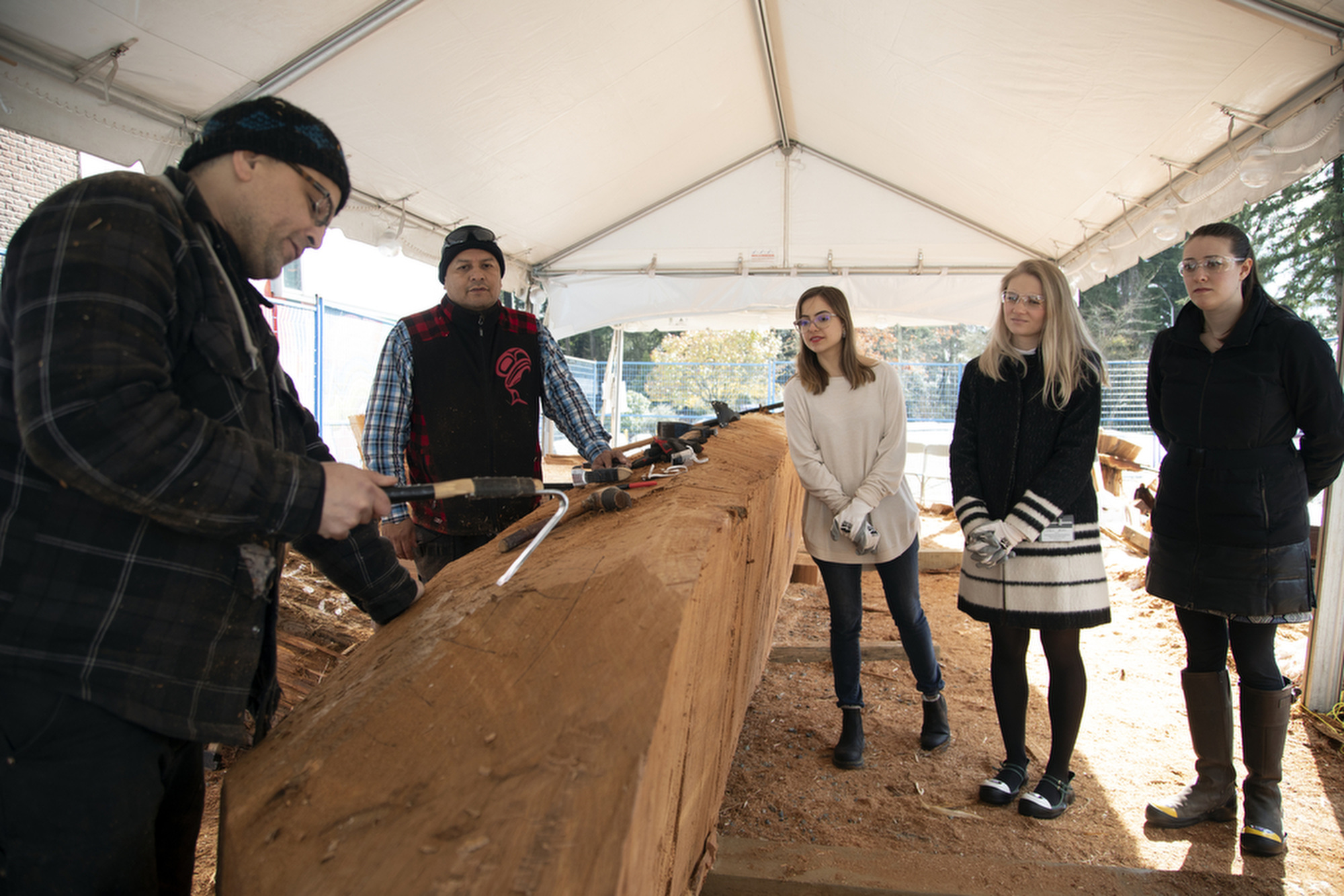

Left: Xats’alánexw siyám (Victor Harry) leads a community engagement event. Capilano University employees and students were encouraged to take part and contribute to the carving process. Right: Elder Sla-holt (Ernie George) carves the log during a community engagement event.
Traditionally, Ses siyam’s ancestors would remove the material inside the canoe with fire and stone tools, and then burn the outside to harden and blacken it. The inside would be painted with a red compound made of salmon berries, bone marrow or fish grease and the soft inner part of the red cedar.
“We use steel tools and chain saws instead of stone tools, but the basic principles are the same as those of our ancestors,” says Ses siyam.
When the canoe is ready, a ceremony is held to awaken and name the spirit so that it can begin its life as a canoe. Women again brush the canoe with cedar boughs, this time to bring it back to life, while the men sing and drum. In the Squamish Nation, there is no difference between a song and prayer.
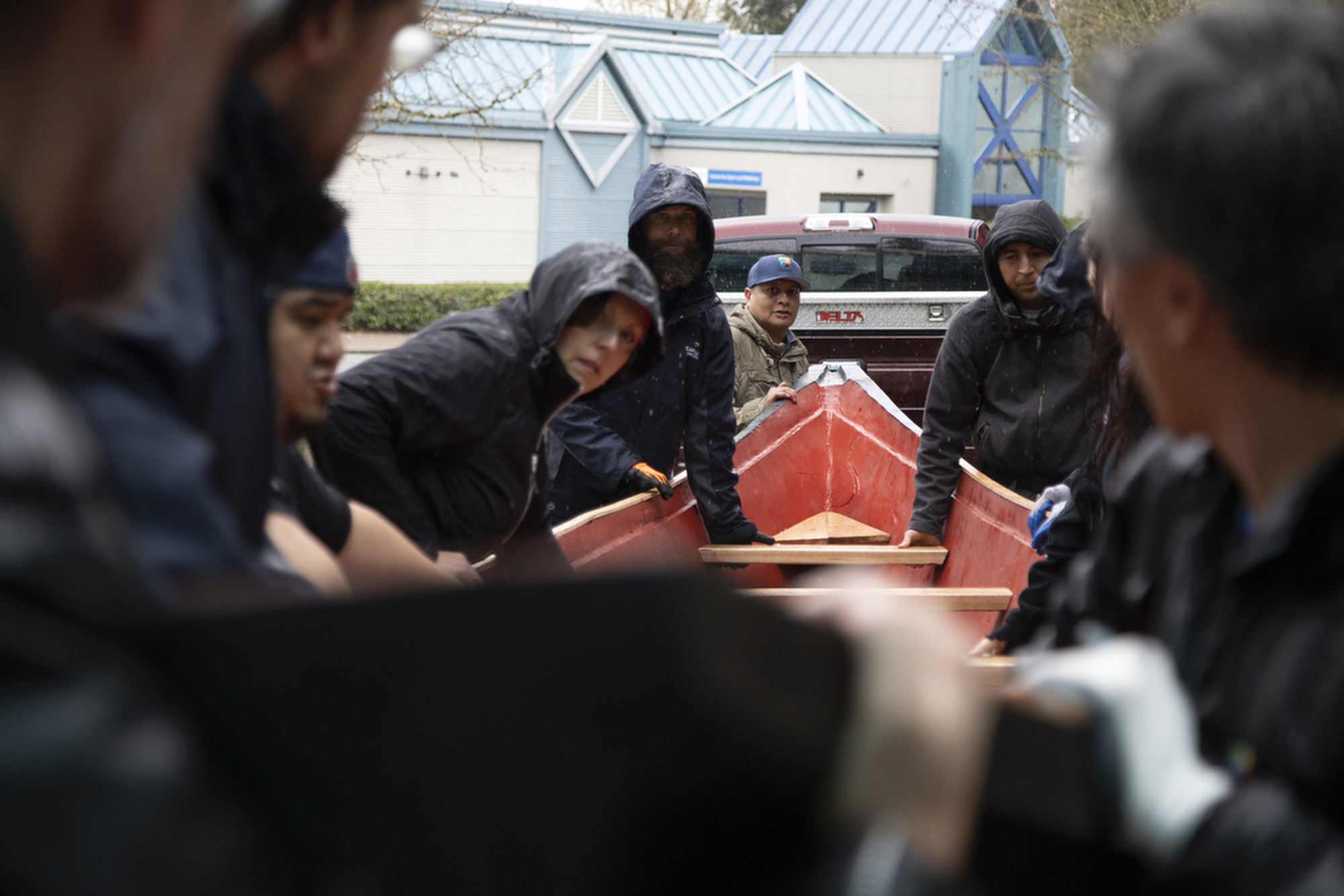
Ses siyam, with the help of Capilano University employees, loads in the canoe in preparation for the Awakening and Naming Ceremony.
While Ses siyam has worked with 20 apprentices over the years, only a few have gone on to carve canoes, so passing on the traditional knowledge is very important to him.
“You can’t learn canoe carving from a book, it’s taught in the oral tradition,” says the master carver. “This is the most community engagement I’ve ever had carving a canoe and I’m glad it was documented. It’s a great opportunity to leave a legacy and bring cultural awareness to many different audiences.”
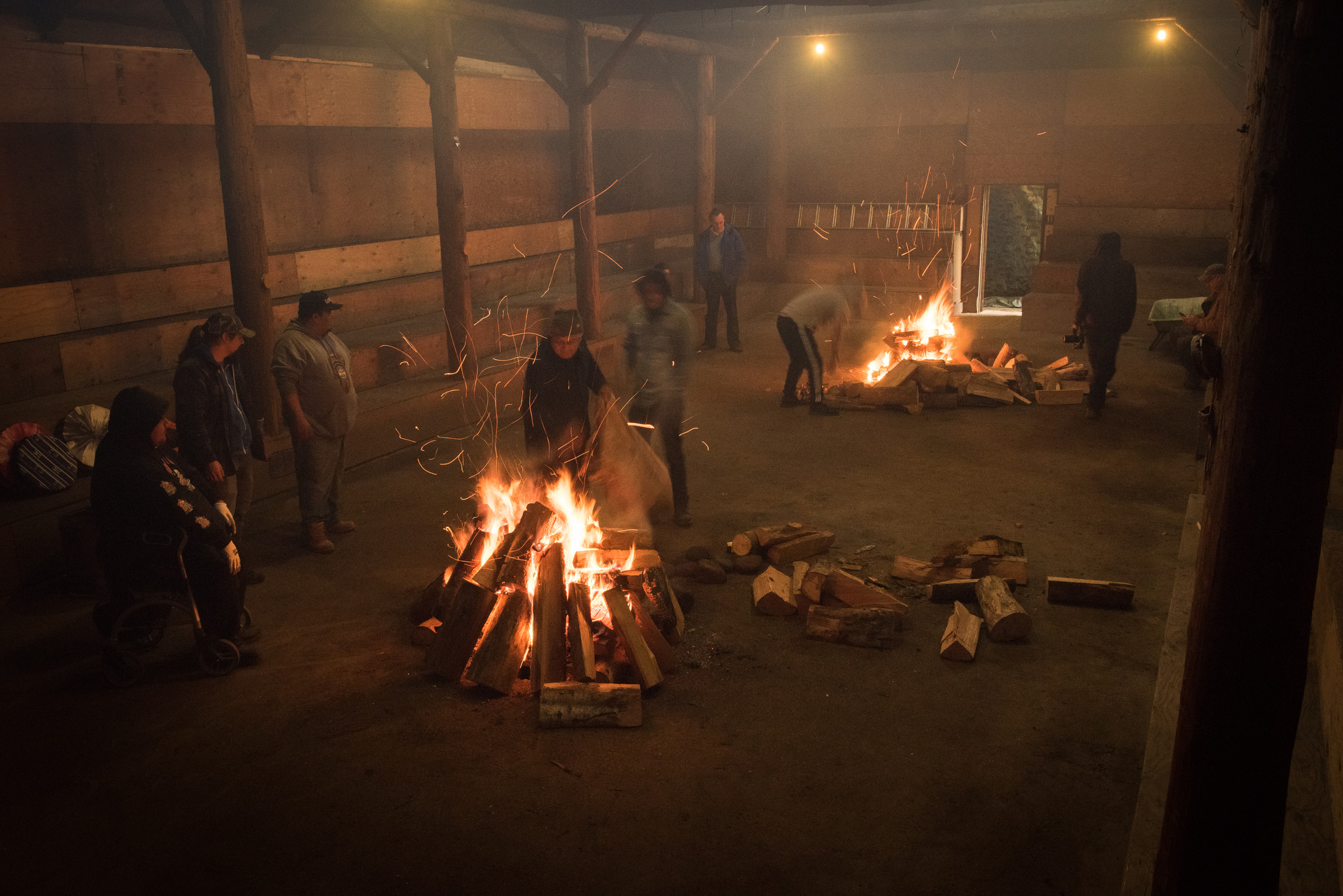
Fires, used to heat up stones, are prepared prior to the canoe steaming process.
Written by: Shannon Colin
Photography by: Rob Newell and Tae Hoon Kim


